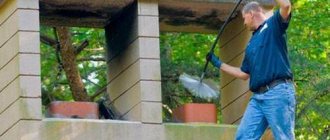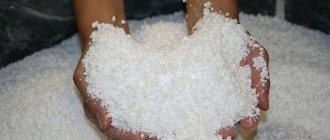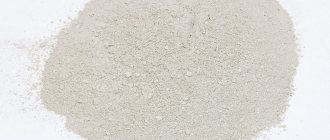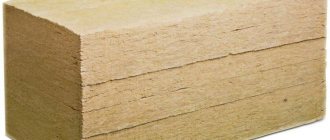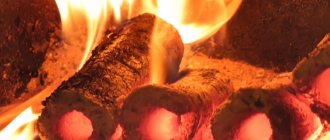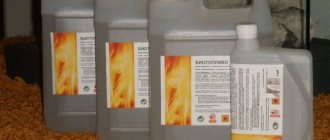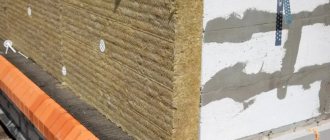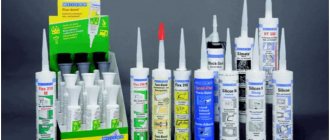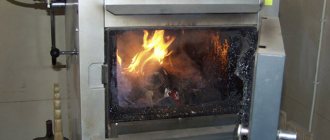Clay is the most common soil on earth. It is formed after the decay and weathering of rocks into tiny particles, and is the last stage of their degradation. The clay occurs in continuous masses or in thin layers (lenses) close to the surface.
Previously, this material was mined in the floodplains of rivers and lakes. Nowadays this is done more often in quarries. The quality and composition of clays differs in different places, which determines the area of their use. Most enterprises (for example, brick and cement factories) are built in areas with clay deposits. This significantly reduces transportation costs.
The bond between clay particles is quite strong, which determines many of its properties. But it is not difficult to destroy this connection, since clay is a soft soil. Therefore, its extraction is carried out in an open way. Excavators, bulldozers and other ground mechanisms are used to extract material. There is no need to drill or blast when extracting clay.
Clay, properties, types and varieties, origin, extraction and use.
Clay is a sedimentary rock with a fine-grained structure and complex composition. Plasticity, viscosity, fire resistance and other properties of clay are determined by which rock-forming substance is the main one.
Clay
Characteristics and properties of clay. “Fat” and “skinny” clays. Color. Water resistance. Plastic. Fire resistance. Caking ability
Types and varieties of clay
Origin of clay
Clay mining. Quarrying methods
Application and use of clay. Advantages
Clay:
Clay is a sedimentary rock with a fine-grained structure and complex composition. Plasticity, viscosity, fire resistance and other properties of clay are determined by which rock-forming substance is the main one.
These can be clay materials such as kaolinite (Al2O3 2SiO2 2H2O), andalusite, disthene and sillimanite (Al2O3 SiO2), montmorillonite (MgO Al2O3 3SiO2 1.5H2O), halloysite (Al2O3 SiO2 H2O), hydrargillite (Al2O3 3H2O), diaspore (Al2O3 H2O), corundum (Al2O3), monothermite (0.2[K2MgCa]O Al2O3 2SiO2 1.5H2O), muscovite (K2O Al2O3 6SiO2 2H2O), nacrite (Al2O3·SiO2·2H2O) and pyrophyllite (Al2O3·4SiO2·H2O).
For example, montmorillonite, which belongs to layered silicates, has sorption properties and has a pronounced ability to swell strongly.
Different types of clay may contain particles of kaolinite, andalusite, muscovite, hydrargillite, nacrite, corundum, pyrophyllite and other constituent minerals in different proportions.
Among the impurities, the most common particles are quartz, gypsum, calcium, dolomite, pyrite, siderite, magnetite, and glauconite.
Characteristics and properties of clay:
The characteristics of clay materials depend on their composition, granule size, moisture content of the material, and location of extraction. When assessing the properties of clay, a whole range of characteristics is used - from density and solubility in water to porosity and thermal conductivity.
Main properties of clay:
– when it gets into water, it gets wet and breaks up into separate particles, forming a suspension or forms a mass similar to dough;
– in a dry state it has the structure of dust, in a wet state it becomes soft, plastic, and easily takes any shape;
– after drying or firing, it becomes strong and durable. As it dries, it decreases slightly in volume due to natural shrinkage;
– when moistened, it has good binding abilities. Thanks to these qualities, it is used in the manufacture of bricks and some types of dishes;
– clay in a wet state has good covering qualities, so in the past it was often used for coating wood-burning stoves, walls of houses and outbuildings;
– this material is capable of absorbing substances dissolved in liquids. Sorption properties make it possible to use it for filtration and purification from foreign impurities of vegetable fats and petroleum products.
Technologies for processing clay , changing its composition or “fat content” make it possible to obtain raw materials with specified properties - the desired shade, with greater fire resistance, less shrinkage, etc.
Cement composition
When decorating the chimney externally, the question arises about what kind of solution is needed for laying the stove in this case.
You will need a mixture of sand, cement and water. To prepare it, combine 3 shares of sand with 1 portion of cement grade M 400. The components are sifted before mixing. Combine the dry substances in a deep container, mix thoroughly and add water. The finished solution has a viscous and thick consistency; it remains mobile, but does not flow off the spatula.
When laying the chimney, it is advisable to use cement mortar
You can make a fireproof concrete mixture from cement, gravel, fireclay and fine-grained sand, combining them in a ratio of 1:2:0.4:2. If you need to increase the strength of the solution, you can use quartz chips. Add 10 liters of clean water to 25 kilograms of mass; it is better to mix with a concrete mixer or mixer. The mixture hardens quickly, so it should be added immediately after mixing.
“Fat” and “skinny” clays:
Changing the proportions of the main components and impurities makes the clay “lean” or “fat”. The plasticity of the material and the quality of the final product depend on this property.
Products made from too “oily” clay deteriorate during the drying or firing stage - they become covered with cracks or warp. The use of thinning additives makes it possible to reduce the shrinkage of the material during natural drying or heat treatment. Sand is most often used as such an additive: fine, medium fine or coarse. It is thoroughly washed to get rid of dust, as it reduces the viscosity of the clay mass.
“Skinny” clay has low plasticity and is unsuitable for modeling or molding. To improve plastic properties, elutriation technology is used. This is the enrichment of material by separating clay particles from impurities. After diluting the raw material with water, slowly settling clay particles are filtered from heavier sand and stones.
Removing Impurities
Almost all quarry clays and sands contain impurities and require purification. Remains of plants, roots, grains of sand, pebbles, and pieces of crushed stone are removed from raw materials in various ways.
How to remove impurities from clay
Impurities greatly degrade the quality of the masonry. Purification of raw materials is carried out in three stages:
- manual sampling of plant remains, roots, crushed stone, pebbles;
- sifting through a metal sieve with a hole size of 1.5 mm;
- soaking clay;
- rubbing through a metal fine-mesh sieve.
Photo 2. The process of sifting clay through a metal sieve. You need to press it with your palm so that all the particles pass through the mesh evenly.
In practice, to clean clay for mortar, craftsmen do without the labor-intensive process of soaking the raw materials.
How to remove impurities from sand
The sand is considered prepared when the water passing through it becomes clear. To prepare the material, you need to do the following:
- Plant remains, roots, and large stones are manually selected from the sand.
- After a rough sampling, the material is sifted through a metal sieve with a mesh size of 1.5 mm.
- The sand is placed in a burlap bag (or net) and washed with running water. A hose is used for flushing; water is supplied under pressure.
Clay color:
The color of the breed can be yellow, brown, blue, greenish, black. The color depends on the concentration of chromophores - unsaturated atoms. Cobalt compounds give the material a blue tint, chromium makes it olive, and admixtures of magnesium and nickel make it brown and gray. After firing, clay products become red or white.
How long does it take to dry heating structures?
Masonry with clay hardens for a very long time, the brick absorbs moisture and practically does not release it. Therefore, drying the stove takes place in 2 stages.
Natural drying takes at least five to seven days. At this time, the damper, door and vent in the oven should be open.
It is recommended to point the fan at the mouth of the firebox. During 5-6 days of natural drying, the solution hardens only on the surface of the stove, firebox, and chimney.
Forced drying is carried out for 9-10 days in summer and 3.5-4 weeks in winter.
The duration of drying depends on the design of the oven, its size and time of year. Several thin logs are burned in the stove daily (twice a day).
Drying is considered complete if, 3-4 hours after heating, there is no condensation on the inner surface of the door and on the valve.
Fire resistance of clay:
According to their ability to withstand high temperatures without loss of strength, clay materials are:
– low-melting. Their processing is carried out at a temperature of +1350 °C. They are used in the production of facing bricks, tiles, decorative wall masonry elements;
– refractory. The minimum amount of impurities in the composition makes it possible to process at higher temperatures - up to +1580 °C. They are used in the production of facing building materials and sewer pipes;
– fireproof. Materials of this group contain virtually no impurities in their composition, so their melting requires a temperature above +1580 °C. They are mainly used in the production of fireclay bricks for lining stoves, laying fireplaces, and chimneys.
No. 7. Ready-made mixtures for laying stoves
Those who are afraid that they will not be able to cope with the selection of clay and proportions can opt for ready-made mixtures for ovens . They are sold dry , and their preparation consists of adding water and mixing thoroughly. Everything is very simple and quick, but experienced stove makers still advise you to take the trouble and prepare a clay solution with your own hands.
Ready-made dry mixes for ovens are:
- simple , consisting only of clay and sand. This is the most economical and optimal option;
- improved with the addition of plasticizers and lingosulfates, which increase the strength and fire resistance of the solution, increase resistance to sudden changes in temperature and humidity;
- heat-resistant mixtures containing clay and fireclay filler. Such compositions can withstand up to 13000C and are suitable for laying the combustion chamber.
If the mixture contains cement, then it is better to refuse the purchase. how much ready-made mixture will be needed to lay 100 bricks, since the same composition from one manufacturer can vary greatly from batch to batch and even from bag to bag. As for manufacturers , the stores offer mixtures from a number of domestic ones, “Plitonit”, “Pechnik”, Termix , from Borovichevsky, Kostroma and Yaroslavl brick factories.
Clay sinterability:
This property is defined as the ability of a plastic material to transform into a solid, stone-like state when fired at high temperatures. Clay after firing should not soak in water. This property is acquired due to irreversible changes in the structure of the material, namely, the removal of physically bound water, the decomposition of clay material into silicon oxide and aluminum oxide. At temperatures from +1000 °C to +1200 °C, new water-resistant mineral compounds are formed. The melt of fusible components solidifies when cooled, making the mass hard and durable.
Types and varieties of clay:
In industry, construction, and cosmetology, clays of different composition, characteristics, and color are used. The division of materials into types is determined by a combination of properties such as plasticity, sinterability, fire resistance, and the amount of impurities. The most common are:
– kaolin (white) clay . White clay is used in the production of porcelain and earthenware;
- blue clay. In demand in cosmetology and medicine;
– bentonite clay . When preparing an aqueous solution, it increases in volume several times. This property makes it indispensable in the construction of pile foundations and drilling wells;
– fireclay clay . Used in the production of fire bricks;
– shale clay . Shale is used to make cement;
– pottery (lump) clay . Lump clay is used to make pottery;
– montmorillonite (full) clay . It is used to purify products such as molasses, beer, wine, syrups, juices, oils, petroleum products, and is also used as an improving additive in the manufacture of soap.
Features of material selection
The process of constructing modern stoves is divided into several stages:
- The first stage is the arrangement of the furnace foundation using a concrete composition;
- The second stage is the laying of a furnace from refractory bricks using a clay-based masonry compound;
- The third stage is lining the furnace with a plaster composition.
The most important is the stage of direct masonry and the preparation of a reliable base, which must have high performance characteristics - heat resistance, adhesion, water resistance, strength and durability.
To equip modern stoves, several types of masonry mortars are used: clay, lime and cement.
Masonry mortars can be simple or complex. Simple ones consist of one type of binder and filler; complex mixtures include two or more binders and several aggregates. Binding components are lime, clay and cement.
To prepare the mortar for masonry, you will need the following tools:
- Mixer;
- Kneading container;
- Sieve;
- Trowel;
- Master OK;
- Plastic spatula;
- Construction thermometer;
- Scales.
Origin of clay:
Clay is a naturally occurring product formed from feldspar and igneous rocks that has a fine texture when dry. By origin, these rocks are continental, formed on the mainland, and marine, formed at the bottom of the sea.
As a result of shifts in earth layers, earthquakes, and floods, granites, volcanic glass, tuffs, and porphyrites were crushed. The physical change and destruction of rocks was influenced by the crystallization of salts, freezing of water, and the vital activity of microorganisms.
The formation of sea clay layers occurred when clay substances were deposited by water currents, accumulated and settled. Clays of the marine group are:
– coastal-sea. Their place of formation is coastal regions, river deltas and bays. Clay layers often alternate with coal, sand, and silt;
– lagoon. Clays formed in sea lagoons contain high concentrations of sulfides, calcite, and iron. Fire-resistant species are common among lagoonal alluvial rocks;
– shelf. Rocks that were formed at a depth of more than 200 m have a denser structure and homogeneous composition.
Continental clays are also divided according to their place of origin. They are:
– deluvial. A characteristic feature is the mixed composition, its heterogeneity even in one time layer;
– lake. The best fire-resistant clays are formed precisely on the bottom and shores of lakes. They contain all the components necessary for the manufacture of fireclay materials;
– proluvial. They are formed by the destruction of rocks, washed away and carried along erosion furrows to the foot of the mountains. Their characteristic feature is layering, looseness, heterogeneous composition;
– river. They can be found in river floodplains; they contain a large amount of impurities in their composition and most often turn into pebbles.
There are also residual rocks with low plasticity, formed as a result of weathering of rocks.
Clay mining. Quarrying methods:
In our country, clay mining is carried out in the Urals, Eastern and Western Siberia. Often several types of clay are produced at one deposit. There are 3 groups according to the difficulty of quarrying:
- first group. Development of the top layers of soil with plant residues, work is underway to excavate loam;
- second group. This is compacted rock, saturated with moisture, as well as deposits of lumpy rocks, with admixtures of gravel;
- third group. The development of hardened shale strata and frozen clay soil is underway.
Quarry development methods depend on the volume and depth of deposits and their location. The most common method of extracting clay-containing rocks is the extraction of minerals using special equipment - gear hobbing excavators. Rock blasting is used in deep mining of large deposits. Kaolin white and blue clay is mined using devices that create a dense water jet. Most often, hydromonitors are used when the layer humidity is high.
Extraction of materials for ceramics manufacturing enterprises is carried out using gear hobbing excavators by cutting layers of different thicknesses. Before development begins, preparations are carried out:
– laying access roads;
– clearing the quarry horizon;
– delivery of equipment.
The developed soil and sand are removed from the quarry and poured into a dump, and the clay is transported to its destination. If several varieties of clays are found in one deposit, the development of the layers is carried out separately. This technology is called “Selective Generation”. It is more efficient than bulk mining, in which all layers are cut off at the same time.
Application and use of clay:
When dry clay is combined with water, a plastic mass is formed. Depending on the place of production and composition, it is used in a variety of fields and industries:
– production of ceramics . This is one of the main uses of clay. Different varieties are used to make ceramics, earthenware, and porcelain. These materials are used to make dishes, figurines, vases, and souvenirs. Although pottery has been known for a very long time, it continues to improve even now;
– production of building materials . Clay is the main component of mortars that are used in the manufacture of facing and masonry bricks and tiles. Clay or ceramic tiles are considered one of the best roofing materials. It is durable, strong, frost-resistant, holds heat well, and does not make noise when it rains;
– cement production . For the production of cement, shale is used, which contains 22% silicon dioxide, 5% calcium oxide. The clay content in cement does not exceed 25%, the second component, limestone, accounts for 75%. The components are diluted with water, and the resulting mass is sent for firing. The resulting granulated clinker is cooled, crushed to dust, and 5% gypsum is added;
– technical ceramics . This category includes a fairly large group of ceramic products, which are characterized by increased hardness, heat resistance, resistance to abrasive wear and mechanical deformation. The main types of technoceramics are structural, instrumental, electro-radiotechnical, ceramics with special properties. These are plumbing fixtures, electrical insulators, thread-conducting fittings, rollers, couplings, bushings. Corundum ceramic materials are used in the production of armor panels and body armor.
No. 5. Lime mortar for oven
Clay mortar does not have sufficient strength for laying a foundation, and under the influence of condensation in the chimney pipe area it can generally crack, so lime mortar is used for these parts of the furnace. To prepare it you will need:
- lime dough;
- sand;
- water.
Slaked lime is not suitable for this work - you need to take quicklime and slak it yourself to obtain a known test. It is not recommended to perform this process at home: it is difficult and dangerous. It is better to buy lime paste ready-made at a hardware store.
Preparing lime mortar is tens of times easier than clay mortar . The required amount of self-dug sand is sifted through a sieve with a mesh of 1 mm; fractions of 0.7-0.9 mm are chosen from the purchased one. The presence of organic matter in the sand in this case will not be a problem, especially since lime has biocidal properties. You can take regular tap water: the requirements for its hardness are not strict.
The ratio of dough to sand is 1:3, water is added to the consistency of rich sour cream. This ratio may need to be adjusted. The lime dough is kneaded well and sand begins to be added to it, starting with 1/2 part. After kneading, look at the solution sticking to the solution: ideally, it should stick in a layer of 2-3 cm, and it is until such an effect is achieved that sand is added. Usually this is about 3 parts, but can be up to 5.
The last stage is the fluidity test . We apply a 3 mm mortar to the brick, place a second brick on top, tap and observe the behavior of the mortar. Ideally, there should be a little solution around the edges that will not drain. If it does not squeeze out, you need to add a little water; if it drains, add lime paste, since the amount of sand required to ensure proper plasticity was determined at the previous stage.

